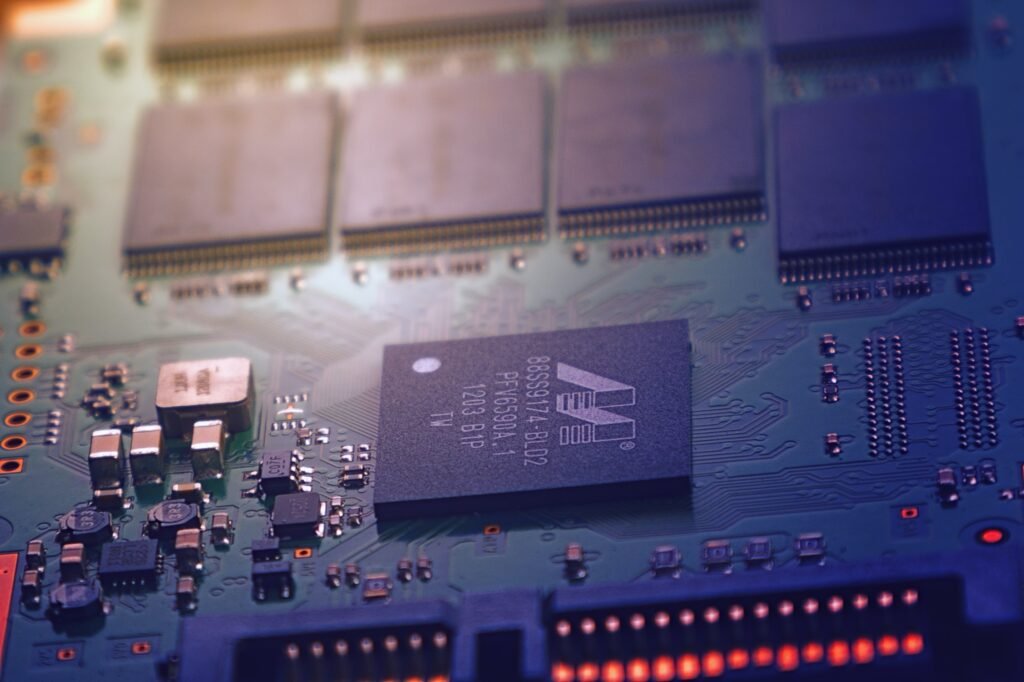In today’s rapidly evolving technological landscape, artificial intelligence (AI) has emerged as a powerful tool with a wide range of applications. One fascinating application of AI is the creation of virtual assistants, which have become increasingly popular in recent years. These intelligent software programs are designed to assist users by answering questions, completing tasks, and even engaging in conversation. However, the capabilities of virtual assistants extend far beyond simply following commands. They rely on the advancements in AI, particularly in generative AI, which allows machines to emulate human creativity by generating words, sounds, images, and videos. With neural networks modeled after the human brain, AI can sift through massive amounts of data, recognize patterns, and make predictions. As a result, virtual assistants, or chatbots, have become an integral part of our daily lives. However, the rise of generative AI also raises concerns about the potential for deepfakes, misinformation, and biases in AI-generated content. Major players in the field, such as OpenAI, Google, Microsoft, and IBM, are actively involved in the development and improvement of AI technologies and chatbots.
Artificial Intelligence in Virtual Assistants
Virtual assistants have become an integral part of our daily lives, helping us navigate through tasks and activities with ease. At the heart of these intelligent virtual assistants lies artificial intelligence (AI), a rapidly growing field of technology that enables machines to perform tasks that typically require human intelligence. With AI, virtual assistants are able to understand and respond to human commands, making them an indispensable tool in our increasingly digital world.
Definition of Virtual Assistants
Virtual assistants are computer programs or applications designed to provide assistance to users in performing tasks, answering questions, and providing information. These assistants use natural language processing (NLP) to interpret and understand human language, allowing users to interact with them using voice commands or typed queries. Examples of popular virtual assistants include Amazon’s Alexa, Apple’s Siri, Google Assistant, and Microsoft’s Cortana.
Overview of Artificial Intelligence
Artificial intelligence is a broad term that refers to the simulation of human intelligence in machines. It encompasses various technologies and techniques that allow machines to perceive, reason, learn, and make decisions. AI is not limited to a single approach or algorithm but encompasses a range of methodologies, including machine learning, deep learning, natural language processing, and computer vision.
The Role of AI in Virtual Assistants
Artificial intelligence plays a crucial role in the functionality and capabilities of virtual assistants. It enables these assistants to understand and interpret human commands, provide accurate and relevant responses, and continuously improve their performance over time. By applying AI techniques, virtual assistants can learn from user interactions, adapt to individual preferences, and deliver personalized experiences. AI-powered virtual assistants are becoming increasingly sophisticated, able to carry out complex tasks and interact with users in natural and conversational ways.
Applications of Artificial Intelligence
Artificial intelligence finds applications in various fields, and virtual assistants are just one example of how AI is transforming industries. Here are a few notable applications of AI:
Medical Diagnosis
AI has the potential to revolutionize the healthcare industry by aiding in medical diagnosis. AI algorithms can analyze medical images, such as X-rays and MRI scans, to detect abnormalities and assist physicians in making accurate diagnoses. Additionally, virtual assistants integrated with AI can provide patients with personalized health information, schedule appointments, and answer common medical questions.
Image and Content Generation
Generative AI, a branch of AI, empowers machines to create realistic and original content such as words, sounds, images, and videos. Using deep learning techniques, AI models can generate photorealistic images or compose music that mimics human creativity. This has widespread applications in entertainment, advertising, and design industries, where AI-generated content can save time and resources while maintaining high-quality standards.
Machine Learning in AI
Machine learning is a subset of AI that focuses on enabling computers to learn from data and improve their performance without being explicitly programmed. Machine learning algorithms analyze large datasets and learn patterns and relationships within the data. This allows machines to make predictions, recognize patterns, and make decisions based on the input they receive. Machine learning algorithms are the backbone of many AI systems, including virtual assistants, as they enable these systems to understand and respond appropriately to user commands.

Generative AI
Generative AI refers to AI systems that have the capability to create new content that resembles and imitates human creativity. These systems employ deep learning techniques and neural networks to generate words, sounds, images, and even videos. Generative AI has opened up new avenues for creativity and content creation, enabling artists, designers, and marketers to leverage AI to generate high-quality content efficiently.
Definition and Functionality
Generative AI is an area of AI that focuses on creating new content using algorithms. It involves training AI models on large datasets and then generating new content based on the patterns and relationships discovered within the data. These models learn to create content that is realistic and resembles human-generated content, allowing them to generate a wide range of outputs, from text to images and beyond.
Creation of Words, Sounds, Images, and Videos
Generative AI has made significant strides in creating realistic and original content in various forms. Text generation models can be trained to produce coherent and contextually relevant sentences, enabling them to write articles, poems, and even code. Sound generation models can compose music and produce audio outputs that resemble those created by human musicians. Image and video generation models can generate visual content that is remarkably close to what humans can produce.
Mimicking Human Creativity
One of the most fascinating aspects of generative AI is its ability to mimic and replicate human creativity. AI models can learn patterns and styles from existing content and generate new content that closely resembles the work of human creators. For example, AI algorithms can learn from a dataset of famous paintings and then generate new paintings that align with the artistic style of renowned artists. This ability to mimic human creativity opens up exciting possibilities in the creative industries and challenges our conceptions of what it means to be creative.
Machine Learning and AI
Machine learning is a critical component of AI systems and plays a significant role in the development and capability of virtual assistants. By training computers to recognize patterns and make predictions based on data, machine learning enables AI systems to understand and respond to user commands effectively.
Training Computers to Recognize Patterns
Machine learning algorithms can analyze vast amounts of data and identify patterns and relationships within the data. This process is called training, where the algorithm learns from labeled or unlabeled data and develops a model that can make predictions based on new input. In the context of virtual assistants, machine learning enables the assistant to understand a user’s commands and respond appropriately based on patterns learned from previous interactions.
Predicting Outcomes
One of the key advantages of machine learning is its ability to predict outcomes based on patterns discovered in data. By analyzing historical data and recognizing patterns, machine learning models can predict future events or make recommendations based on the information available. This predictive capability allows virtual assistants to anticipate user needs and provide personalized recommendations and assistance.
Neural Networks in AI
Neural networks, inspired by the structure and function of the human brain, are a fundamental component of AI systems. Neural networks consist of interconnected nodes, or artificial neurons, that process and transmit information. These networks learn from data by adjusting the strength of connections between artificial neurons, allowing them to recognize patterns and make intelligent decisions.

Neural Networks in AI
Neural networks play a vital role in the capabilities of AI systems, including virtual assistants. By modeling after the human brain, neural networks enable AI systems to make sense of complex and unstructured data, find connections and patterns, and enhance their overall performance.
Modeling after the Human Brain
Neural networks are designed to mimic the structure and function of the human brain. They consist of interconnected layers of artificial neurons, each of which processes and transmits information. The connections between neurons in a neural network are adjustable, allowing the network to learn and adapt based on the input it receives. This modeling after the human brain helps AI systems understand and interpret information in a way that is similar to how humans do.
Connection Finding Abilities
One of the key strengths of neural networks is their ability to find connections and patterns within data. Through the training process, neural networks can recognize complex relationships and correlations that may not be apparent to humans. This enables AI systems to uncover insights, make predictions, and provide recommendations based on the patterns they identify. In the context of virtual assistants, neural networks help these assistants understand the nuances of human language and infer user intentions.
Enhancing AI Capabilities
Neural networks are at the forefront of AI research and development, continually pushing the boundaries of what AI systems can achieve. Advances in neural network architectures and algorithms have led to significant improvements in the performance of virtual assistants and other AI applications. With enhanced neural networks, AI systems can handle more nuanced and complex tasks, leading to more accurate responses and a better overall user experience.
Chatbots and AI Interaction
Chatbots are a common way to interact with AI systems, including virtual assistants. These AI-powered programs are designed to simulate human conversation and provide users with information, support, and assistance. Chatbots use AI techniques such as natural language processing (NLP) and machine learning to understand and respond to user queries.
Definition and Purpose of Chatbots
Chatbots are computer programs that simulate human conversation and interact with users in a conversational manner. They are typically employed for customer service, information retrieval, and task automation. Chatbots can be text-based or voice-based, allowing users to communicate with them through messaging apps, websites, or voice assistants. The purpose of chatbots is to provide effective and efficient communication and assistance to users, automating tasks and delivering information in a conversational and user-friendly manner.
Training on Internet Data
Chatbots rely on large amounts of data to understand and respond to user queries effectively. They are trained on vast collections of internet data, including chat logs, customer service records, and publicly available information. By analyzing this data, chatbots can learn natural language patterns, infer user intentions, and generate appropriate responses. The training data helps chatbots improve their language understanding and conversational capabilities, enabling them to handle a wide range of user queries.
Imitating Speech and Answering Questions
One of the primary goals of chatbots is to imitate human speech and provide meaningful and accurate responses to user questions. Through natural language processing and machine learning techniques, chatbots are trained to understand user queries and generate appropriate answers. Chatbots can leverage their training data to identify relevant information, provide recommendations, or complete specific tasks on behalf of the user. By imitating human conversation, chatbots aim to deliver a conversational and personalized user experience.

Concerns and Issues in Generative AI
While generative AI brings about exciting possibilities, it also raises concerns and challenges that need to be addressed. Here are some of the concerns associated with generative AI:
Deepfakes
Generative AI algorithms can be used to create convincing deepfakes, which are manipulated images, videos, or audios that appear genuine but are entirely fabricated. Deepfakes can be used for malicious purposes, such as spreading misinformation or conducting identity theft. The ability to generate realistic content raises ethical concerns and emphasizes the importance of developing safeguards and regulations to prevent misuse.
Misinformation
With the proliferation of AI-generated content, there is a risk of misinformation being spread through these channels. AI models can be manipulated to generate false or misleading information, which can have severe consequences in domains such as news reporting and social media. Ensuring the accuracy and reliability of AI-generated content is a critical challenge that needs to be addressed to maintain trust and integrity.
Biases in AI-Generated Content
AI models learn from the data they are trained on, which can lead to biases in the generated content. If the training data is biased or contains stereotypes, the AI model may produce biased or discriminatory outputs. Addressing bias in AI-generated content is crucial to ensure fair and inclusive representation and mitigate the potential negative impact of biased content on individuals and communities.
Major Players in AI Development
AI development is a rapidly evolving field with several major players driving innovation and research. Here are some prominent companies contributing to the advancement of AI technologies and chatbots:
OpenAI
OpenAI is an AI research organization aiming to ensure that artificial general intelligence benefits all of humanity. They are known for their work on language models like GPT-3, which has the capability to generate human-like text. OpenAI actively contributes to the development of AI technologies and promotes responsible AI deployment.
Google has been at the forefront of AI research and development, utilizing AI technologies across its products and services. Their virtual assistant, Google Assistant, incorporates machine learning and natural language processing to deliver personalized and contextual experiences. Google’s AI advancements have had a significant impact on various domains, including healthcare, transportation, and language processing.
Microsoft
Microsoft is deeply invested in AI research and development, integrating AI capabilities into its products and services. Their virtual assistant, Cortana, utilizes AI technologies to assist users with tasks, provide recommendations, and deliver personalized experiences. Microsoft’s AI initiatives span areas such as computer vision, natural language processing, and cloud-based AI services.
IBM
IBM is a leader in AI technologies, focusing on developing AI solutions that address complex business problems and drive innovation. IBM Watson, their AI-powered virtual assistant, leverages machine learning, natural language processing, and other AI techniques to assist businesses in various industries. IBM’s AI efforts extend to areas such as healthcare, finance, and cybersecurity.
As AI continues to expand and evolve, these companies, among others, are shaping the future of AI technologies, propelling innovation and enabling the development of intelligent virtual assistants that enhance our daily lives.
In conclusion, artificial intelligence has revolutionized the capabilities of virtual assistants, enabling them to understand and respond to human commands in a natural and conversational manner. AI technologies, such as machine learning and neural networks, drive the performance of virtual assistants, allowing them to recognize patterns, make predictions, and deliver personalized experiences. Generative AI empowers machines to create content that resembles human creativity, opening up new possibilities in various industries. However, there are concerns to address, such as deepfakes, misinformation, and biases in AI-generated content. Major players in AI development, including OpenAI, Google, Microsoft, and IBM, are actively contributing to the advancement of AI technologies and chatbot capabilities. As AI continues to advance, virtual assistants will become even more intelligent and indispensable tools in our daily lives.






